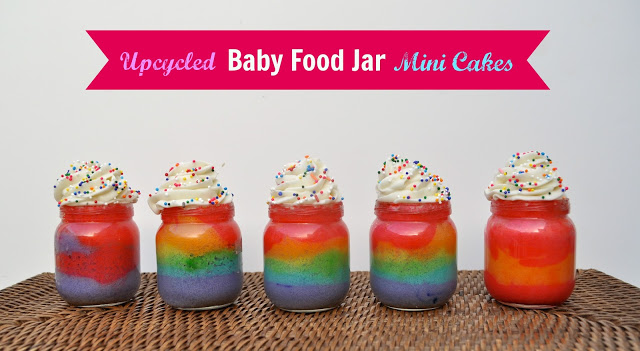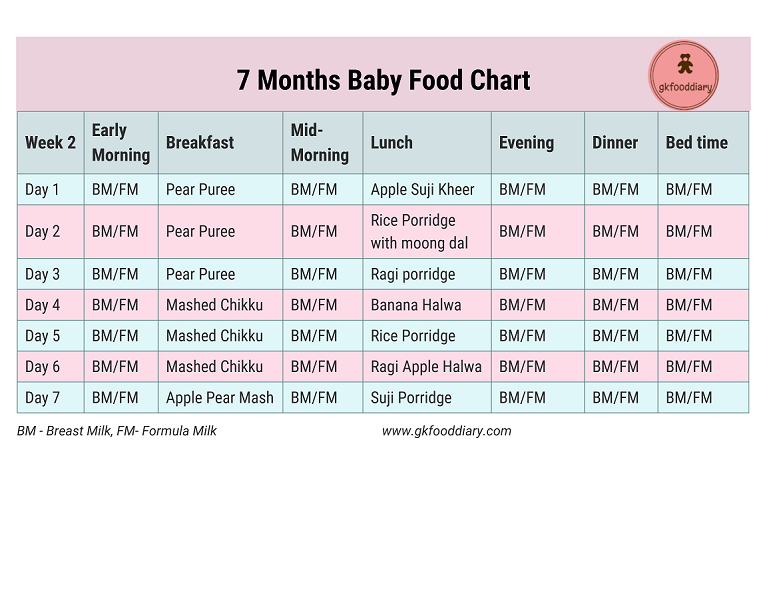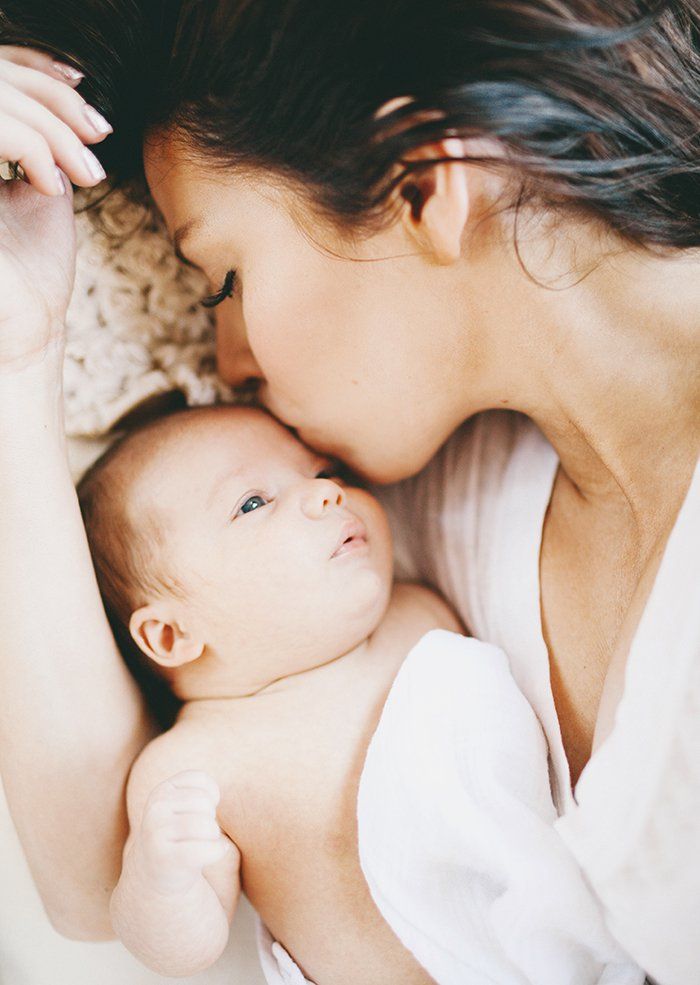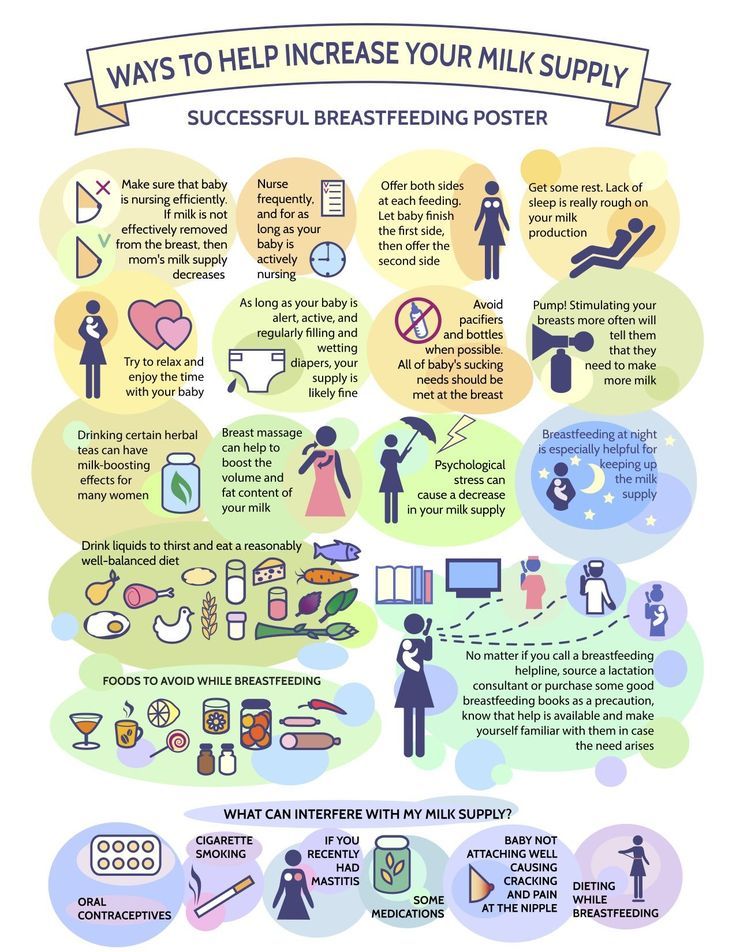Feeding baby by color
Introducing Solid Food To Baby By Color
- Sep 30, 2020
There’s no one right way to introduce food to Baby. One fun method is to feed your baby by the colors of the rainbow. Feeding by color starts Baby on the path to enjoying a variety of healthy foods.
Benefits of Feeding By Color
As with all things parenting, you’ll hear different ideas about how to introduce solids to your baby. Some people start with feeding baby cereal by spoon and moving forward one puree at a time. Other people prefer baby led weaning, allowing babies to feed themselves with foods that are firm enough to grasp, but soft enough to be mashed with Baby's gums. Other people believe Baby should be able to eat anything at any time, as long as Baby won’t choke. There are no hard and fast rules about how to introduce food to Baby apart from making sure Baby is ready to get started with solids. The American Academy of Pediatrics (AAP) says there’s no medical evidence that there’s any advantage to introducing foods in any particular order. So, why not make it fun for you and Baby and feed by color? Go for it! Bravery is inside us all®.
Introducing solid food to Baby by color isn’t just fun, though. Feeding by color introduces your baby to different flavors, both savory and sweet. It also helps establish healthy eating habits while ensuring Baby gets all the nutrients they need to grow strong and healthy. Plus, it encourages kids to continue to be adventurous down the road by eating each color of the rainbow.
When to Start Baby Food
So, how do you know when to introduce baby food? The AAP has a few recommendations for when to start baby food with your baby. Generally speaking, babies are ready for solid food when they:
- Are 4 to 6 months old
- Weigh 13 lbs or more
- Doubled their birth weight
- Can sit up mostly on their own
- Hold their head up for a long time
- Show interest in solid food
- Open their mouth when food is nearby
- Get hungry between feedings
Babies usually let you know when to start baby food by showing interest in what you’re eating and grabbing for it.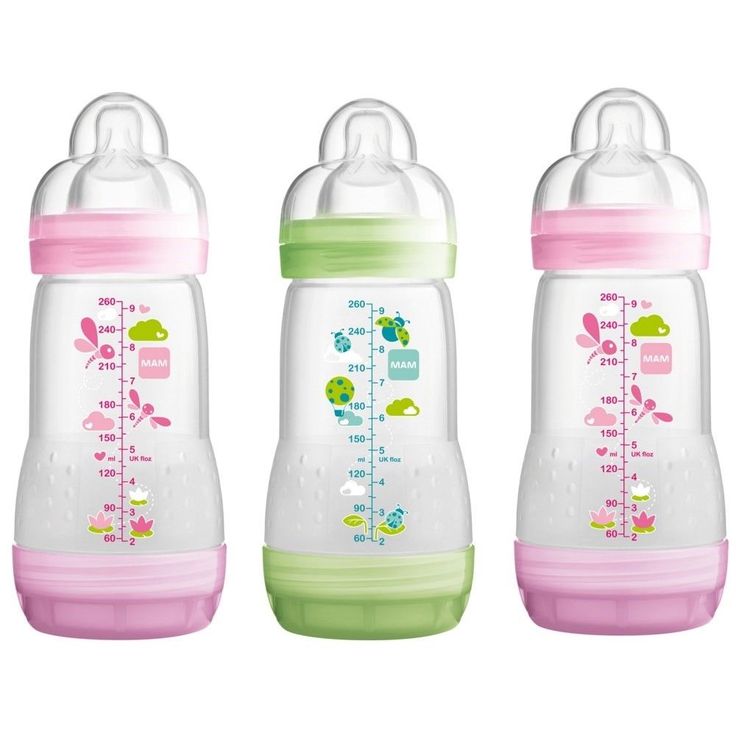 You may see Babies opening their mouths like baby birds whenever you eat. If you’re ready for introducing solid food to Baby, watch how they react to the food in their mouth. If Baby pushes the food out of their mouth with a tongue thrust, they’re not ready quite yet. Try again in a week or two. Look for Baby’s ability to move food to the back of their throat to swallow it. It may take a few tries since solids are a new experience for Baby, and the texture might take some getting used to for them. Once they’re able to swallow solid food, you’re ready to get the taste adventure started! Get your bibs and CATCHALL™ mat ready. Kids are messy. So is parenting®. (But your carpet doesn’t have to be!)
You may see Babies opening their mouths like baby birds whenever you eat. If you’re ready for introducing solid food to Baby, watch how they react to the food in their mouth. If Baby pushes the food out of their mouth with a tongue thrust, they’re not ready quite yet. Try again in a week or two. Look for Baby’s ability to move food to the back of their throat to swallow it. It may take a few tries since solids are a new experience for Baby, and the texture might take some getting used to for them. Once they’re able to swallow solid food, you’re ready to get the taste adventure started! Get your bibs and CATCHALL™ mat ready. Kids are messy. So is parenting®. (But your carpet doesn’t have to be!)
How to Introduce Food to Baby
Feeding by color is an exciting way to start introducing solid food to Baby! To get started, learn what each color of food can offer your baby in terms of nutrients and health benefits.
| Food Color | Nutrients & Health Benefits | Example Foods |
| Red/Pink | Sources of vitamin C, lycopene, and anti-inflammatory antioxidants.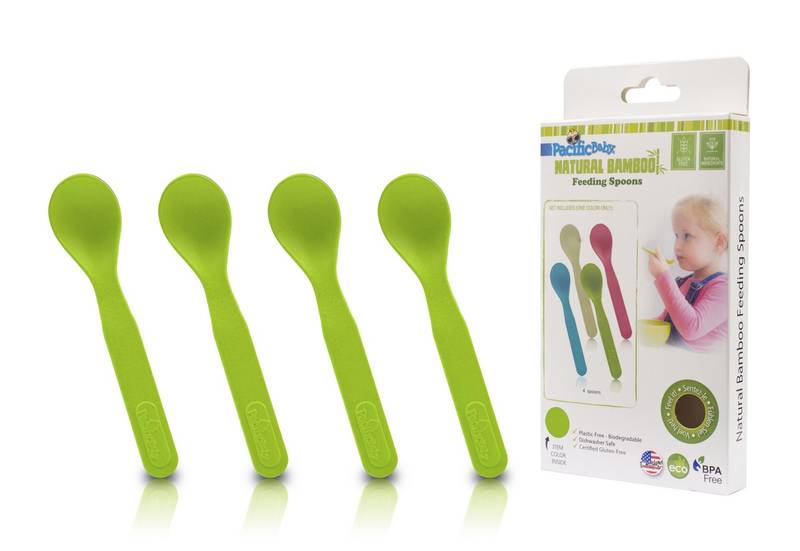 | Red peppers, beets, strawberries, cranberries, cherries, raspberries, watermelon, rhubarb, tomato |
| Orange | Sources of vitamin A, vitamin C, folate, beta-carotene, and potassium. | Oranges, mango, orange peppers, papaya, cantaloupe, carrots, sweet potatoes, butternut squash |
| Yellow | Sources of vitamin C, vitamin B6, vitamin A, folic acid, potassium, and magnesium. | Bananas, yellow peppers, yellow beets, yellow apples, corn, yellow tomatoes, pears, summer squash |
| Green | Sources of lutein, folate, iron, vitamin K, vitamin D, vitamin A, vitamin C, calcium, potassium, magnesium, and amino acids. | Avocado, asparagus, broccoli, spinach, lettuce, kale, cabbage, edamame, peas, green beans, green peppers, zucchini, cucumber, green apple, honeydew, kiwi, lime |
| Blue/Purple | Sources of various antioxidants, but primarily anthocyanin, which protects your body against cell damage and inflammation.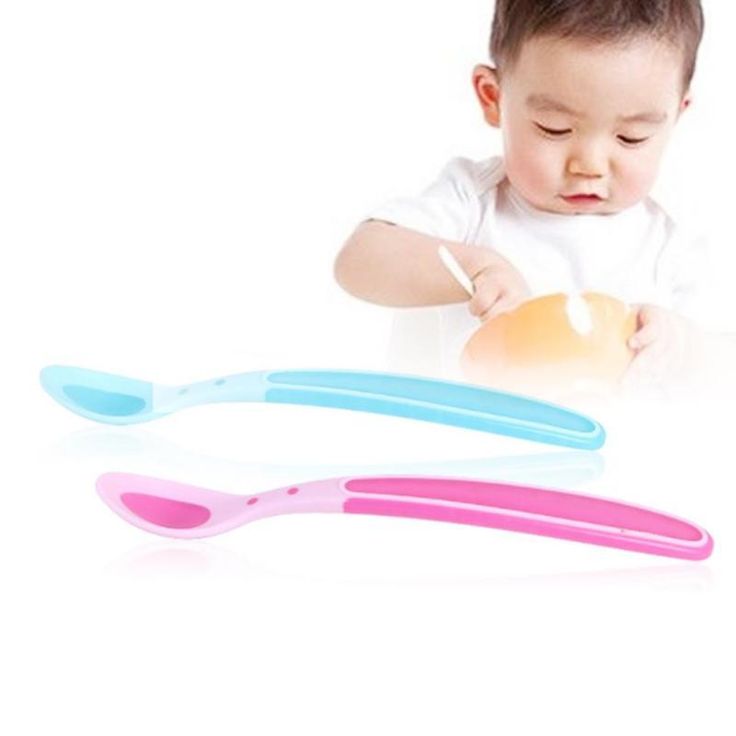 | Blueberries, blackberries, huckleberries, eggplant, figs, plums/prunes, red grapes/raisins, purple potatoes, purple carrots, purple cauliflower |
| White/Brown | Sources of vitamin C, magnesium, potassium, and selenium. | Cauliflower, mushrooms, white potato, turnips, parsnips, white pears, garbanzo beans |
Planning Baby’s menus is fun. Try looking at Baby’s diet over the course of the week, rather than per day. You’ll be hard-pressed to fit every color into a single day. In turn, it’s pretty easy to sprinkle them all in throughout a week. You can even do one color per day!
A week’s menu by color might look like this:
- Monday: Pureed red apple, pureed beets with baby cereal.
- Tuesday: Pureed butternut squash, pureed mango
- Wednesday: Mashed banana, pureed corn, flaked trout
- Thursday: Mashed avocado, pureed green peas
- Friday: Mashed plums, pureed purple cauliflower
- Saturday: Pureed garbanzo beans, mashed potato
- Sunday: Finely diced chicken, whatever’s left!
At first, solids are a supplement to breast milk or formula. A few months after starting solids, your baby should eat a wide variety of foods from each color category. Include veggies, fruits, proteins, and grains, as well as breast milk or formula until age one.
A few months after starting solids, your baby should eat a wide variety of foods from each color category. Include veggies, fruits, proteins, and grains, as well as breast milk or formula until age one.
With certain foods, it’s also a good idea to watch out for any adverse reactions, from diaper rashes to potential signs of a food allergy. According to the Centers for Disease Control and Prevention, the eight most common food allergies are to eggs, fish, milk, peanuts, shellfish, soy, tree nuts, and wheat, but other foods, like citrus, can cause diaper rash or a rash around the mouth because of their high acidity.
If there’s a history of food allergies in your family, watching out for allergic reactions is particularly important, so talk to your pediatrician before introducing any potential allergens and ask what to look out for in your baby. It may also be a good idea to wait 3-5 days between new foods to watch for any adverse reactions. Otherwise, feel free to give these foods a try!
If a food does cause a reaction in your baby, talk to your pediatrician about how to proceed.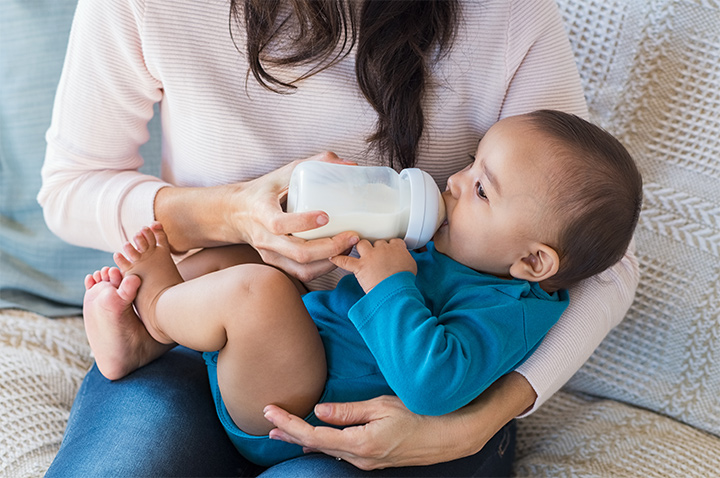 You may need to start with small tastes, or wait to reintroduce the food until later.
You may need to start with small tastes, or wait to reintroduce the food until later.
Important: Never give Baby honey until after the age of one because of the risk of botulism.
Tips For Feeding Baby
Now you know when to start baby food. Whether you begin with spoon feeding purees or letting Baby feed themselves from their CREATE™ Plate, offer lots of variety and see how Baby responds. Remember that kids’ preferences change. Stay flexible with Baby’s meal plan. Here a few tips for issues that might pop up.
What if Baby turns their head away or fusses when I offer more food?
Baby’s telling you they’re finished. Take it one bite at a time. Let them stop when they’re done.
What if Baby rejects a certain color of food?
Try a variety of foods in that color range. Even if Baby isn’t a fan of one green food, they might happily accept another. Alternately, take a break from that color and try again next week.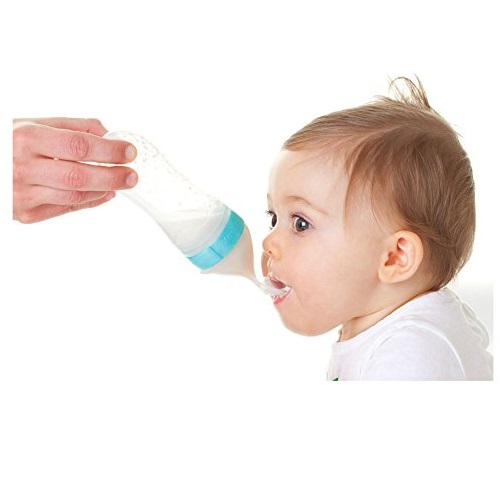
Can I protect my house/carpet from becoming rainbow colored?
Keep our CATCHALL™ mat under Baby’s chair to catch flying food. Put a big, absorbent bib on Baby before every feeding. Sit nearby and don’t put large containers within Baby’s reach. (Invest in a good stain remover, too.)
What if Baby gags on new foods?
If the texture is new, puree the food until it’s smoother, or strain out fibers. If it’s the flavor, take a break and try next week. Palates change.
← Back to Blogs
Feeding Babies From 0 to 12 Months Old
Inside: Get the basics of baby nutrition that every parent should know. Learn how to feed your baby at every age, what nutrients are important in your baby’s diet, and more about feeding babies.
Navigating the first year with a newborn is a whirlwind for any parent, and learning when and how to start introducing solids could be overwhelming (and sometimes stressful!). Need help figuring it all out?
We’re here to help you understand the basics every parent should know about baby nutrition from infancy to toddlerhood.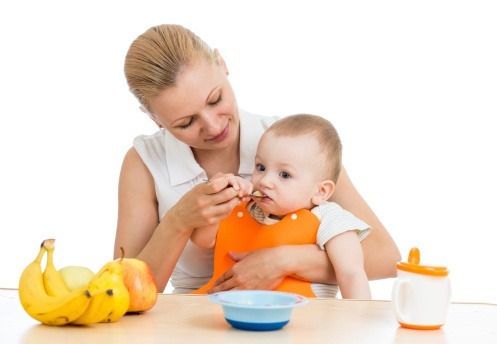 We’ll answer questions about your baby’s diet and how to feed your baby throughout their first 12 months. Plus, get answers to even more top baby feeding questions.
We’ll answer questions about your baby’s diet and how to feed your baby throughout their first 12 months. Plus, get answers to even more top baby feeding questions.
Article contents:
Feeding babies from 0 to 6 months old
Should you start solids at 4 months?
Feeding 6-month-olds and 7-month-olds
Feeding 8-month-olds and 9-month-olds
Feeding 10- to 12-month-olds
Can babies have honey?
What about food allergies?
Feeding your 1-year-old
Feeding babies from 0 to 12 months old
Here’s a breakdown of your baby’s diet for the first year. Learn what babies need nutritionally from food or milk at each age or stage of feeding.
Feeding your newborn to 6-month-old baby
Whether you decide to breastfeed or bottle feed your child, the source of your baby’s nutrition in their first six months is milk.
The main thing to keep in mind when feeding babies is vitamin D. Every baby needs 400 IU of vitamin D daily.
Vitamin D is important for babies whether they’re breastfed or formula-fed. It’s important for their bone development, and it helps to prevent rickets, a condition that softens and weakens the bones.
It’s important for their bone development, and it helps to prevent rickets, a condition that softens and weakens the bones.
It’s important to note that breast milk is naturally low in vitamin D. And, while formula does contain vitamin D, it does not provide enough unless a baby is able to consume at least 32 oz. of formula per day.
Related: How to Choose the Best Formula for Your Baby
Should you start solids at 4 months?
The official recommendation from the American Academy of Pediatrics and World Health Organization is to start solids around six months of age when babies show signs of readiness.
Introducing foods too early may lead to a less nutrient-dense diet later in life. (1,2)
Feeding your 6-month-old and 7-month-old child
Around 6 months of age, babies are able to sit up unassisted, have good head control, be able to move their neck side to side, and show interest in food.
When your baby is showing these signs, you can begin weaning and introducing solid foods.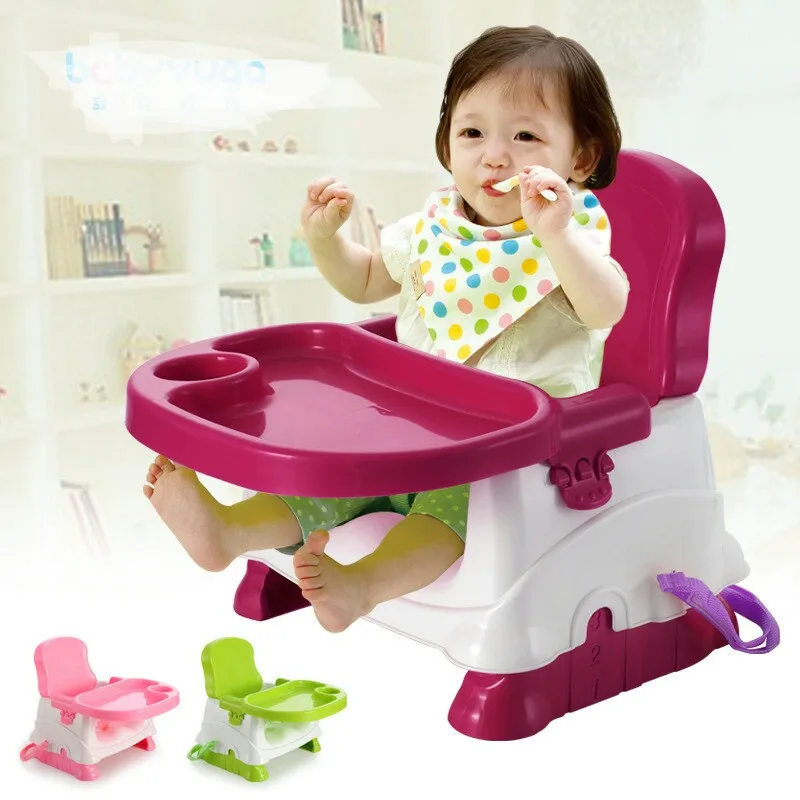
If you’re not sure what foods to start with, you may consider serving chickpeas as baby’s first food. Sweet potatoes are good for babies as well. Read our pediatric dietitian’s list of the top 25 first foods to serve your baby.
You can also start offering fluids to practice cup drinking. Choose an open baby cup or a straw cup to get started.
Why is iron important for babies?
The iron stores that your baby built up in utero begin to diminish around 4 to 6 months of age.
That means it’s important for babies to start getting iron from their own diet. Check out our list of the best iron-rich foods for babies for ideas. (3)
Feeding your 8-month-old and 9-month old baby
By 8-9 months of age, you can begin to present 2 meals a day. If you’re not already, you can start to feed your child on a meal routine.
Consider decreasing the amount of breast milk or formula you offer your child prior to mealtimes to promote their appetite. You can always offer more breast milk or formula after the meal if your baby still seems hungry.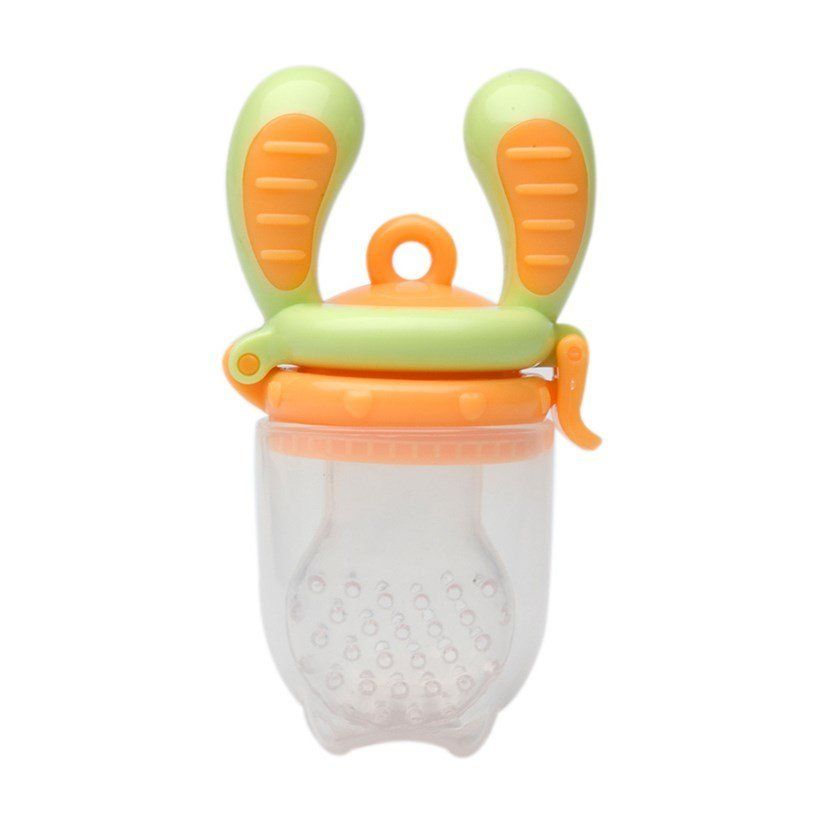
Continue to avoid or modify choking hazards for your baby’s safety.
Your child may be working on their pincer grasp, which starts to develop between 7 and 10 months of age. You may choose to serve foods in small pieces so your baby can practice picking them up.
Feeding your 10- to 12-month-old child
By 10-12 months of age, aim for 3 meals a day.
Move to offer solid foods first and then offer breast milk or formula afterwards. You may even offer breast milk or formula in a cup alongside the meal.
Related: Shopping for baby spoons? Discover the best utensils for babies.
More questions about baby nutrition
When can babies have honey?
Honey should be avoided in the first 12 months of a baby’s life.
This is due to botulism spores that can grow in the baby’s intestines and produce toxins that can lead to serious illness.
After 1 year of age, it’s OK to give your baby honey.
What about babies and food allergens?
The top food allergens are:
- Milk
- Eggs
- Fish
- Shellfish
- Tree nuts
- Peanuts
- Wheat
- Soybeans
The 2019 American Academy of Pediatric recommendations on complementary feeding state that there is no benefit in delaying the introduction of any foods, including the 8 major allergens, beyond 4 to 6 months of life.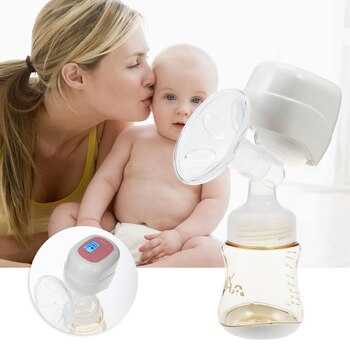
Actually, there is strong evidence that introducing eggs and peanuts at around 6 months of age, but not before 4 months, can prevent a child from developing egg and peanut allergies.
Please consult with your pediatrician before introducing your baby to any of these allergens. (4)
Feeding your 1-year-old child
What feeding and nutritional changes do you have to make after your child turns one? Get more help on what to feed your one-year-old child.
After 12 months of age, you may choose to introduce dairy or non-dairy milk. Read our blog to learn the best milk for toddlers.
Does your child make a big mess when eating? Check out these 8 tips for cleaning up after mealtimes.
If your child struggles with the transition from playtime to mealtime, learn how a pre-meal routine can help your toddler eat better.
Prevent picky eating with our expert toddler feeding strategies.
References
- Heller, RL et al. A qualitative study of providers’ perceptions of parenteral feeding practices of infants and toddlers to prevent childhood obesity.
 BMC Public Health. 2021;21:1276. www.ncbi.nlm.nih.gov/pmc/articles/PMC8243475/
BMC Public Health. 2021;21:1276. www.ncbi.nlm.nih.gov/pmc/articles/PMC8243475/ - Rodriugez-Cano, AM et al. Complementary feeding practices and their association with adiposity indicators at 12 months of age. J Dev Orig Health Dis. 2021 Oct; 12(5): 780-787. https://pubmed.ncbi.nlm.nih.gov/33222718/.
- Baker RD, Greer FR. Diagnosis and prevention of iron deficiency and iron-deficiency anemia in infants and young children (0-3 years of age). Pediatrics. 2010;126(5):1040-1050. https://pubmed.ncbi.nlm.nih.gov/20923825/.
- Fleischer, DM et al. A consensus approach to the primary prevention of food allergy through nutrition: guidance from the American Academy of Allergy, Asthma, and Immunology; American College of Allergy, Asthma, and Immunology; and the Canadian Society for Allergy and Clinical Immunology. J Allergy Clin Immunol Pract. 2021 Jan;9(1):22-43.e4. https://pubmed.ncbi.nlm.nih.gov/33250376/.
The influence of color on the psyche of children, the psychology of color in a child
Surely you have noticed that if a child likes a certain color, he chooses it in everything.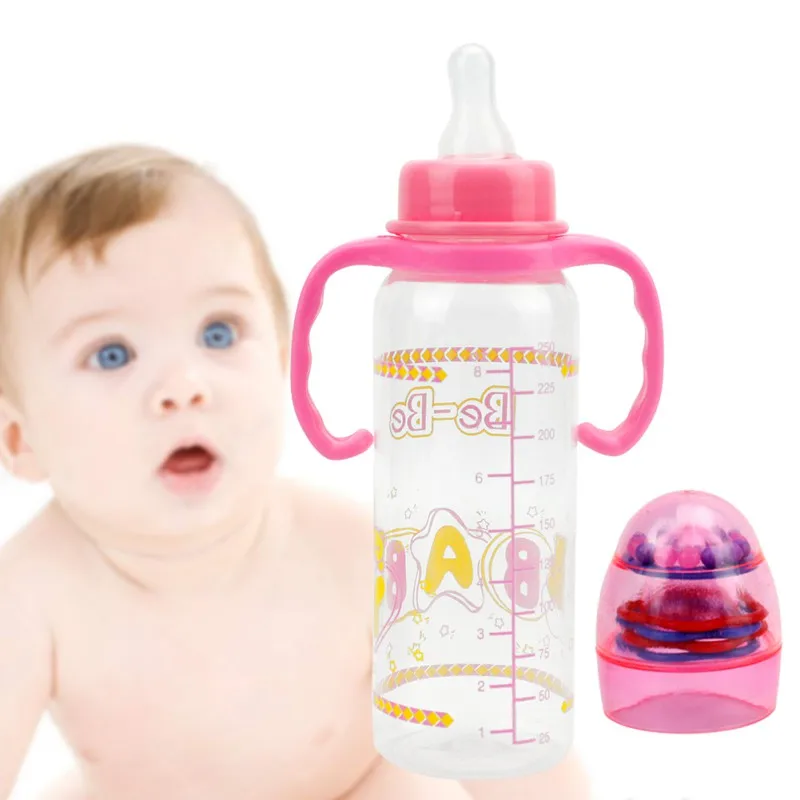 Clothes, toys, accessories, and even balloons or ice cream should be in your favorite color. And nothing can be done - such a period.
Clothes, toys, accessories, and even balloons or ice cream should be in your favorite color. And nothing can be done - such a period.
In fact, children are instinctively drawn to those colors that are most pleasing and useful to them at this stage of development. Scientists have proven that colors have the ability to have a powerful effect on the psyche. This is especially true for children, because the visual perception of the child helps him to know the world. Color can bypass the “barrier” from our consciousness and act on an unconscious level. This property is used in alternative medicine - color therapy.
How color affects the child's psyche
The action of color can calm or invigorate, cheer up and relieve tension. In addition, color can enhance brain activity, affect the intelligence and self-esteem of the baby. That is why it is worth taking seriously the choice of colors for a child's room or wardrobe. A well-chosen combination will stimulate the development of the child, create an atmosphere of harmony, and also contribute to the formation of good taste.
Each color has its own characteristics. What shades are most favorable for children? Let's figure it out.
WHITE
This color is considered neutral. By itself, it is not capable of evoking bright positive or negative emotions, but is a background for other shades. As a rule, children do not choose white as their favorite, but it is always present in clothes. An integral part of the wardrobe is stylish white T-shirts with inscriptions and drawings, classic shirts and blouses.
White is perfect for newborns, symbolizing tenderness and innocence.
As for the child's room, white is preferred for the ceiling and the top of the walls. Dark tones can cause a depressed state or even depression.
BLUE
Until recently, it was considered an exclusively male color. And to this day, passers-by, seeing a baby in blue, confidently say: “What a cute boy!”. Fortunately, modern manufacturers of children's clothing and interior items are moving away from stereotypes, successfully using different colors in collections for boys and girls.
Blue and all shades of blue are associated with the sea, the sky - something boundless, strong and peaceful. Contemplation of the blue color calms, reduces pressure and temperature, dulls pain. In addition, it is good for the eyes and has an awakening effect in the morning due to its "coolness". This color is considered a shade of courage and strength, well suited for decorating children's rooms.
GREEN
The variety of its shades is striking and pleasing to the eye: emerald, light green, olive and khaki. The color of nature and life itself. Associated with growth, development and prosperity.
The psychology of the green color is as follows: it helps to relax, calm down, arouse interest in understanding the world, pacifies nerves and blood pressure. If your child is already calm and balanced, then do not be zealous with green. Perhaps you should consider more "disturbing" shades.
PINK
Of course, we cannot ignore the favorite color of little princesses.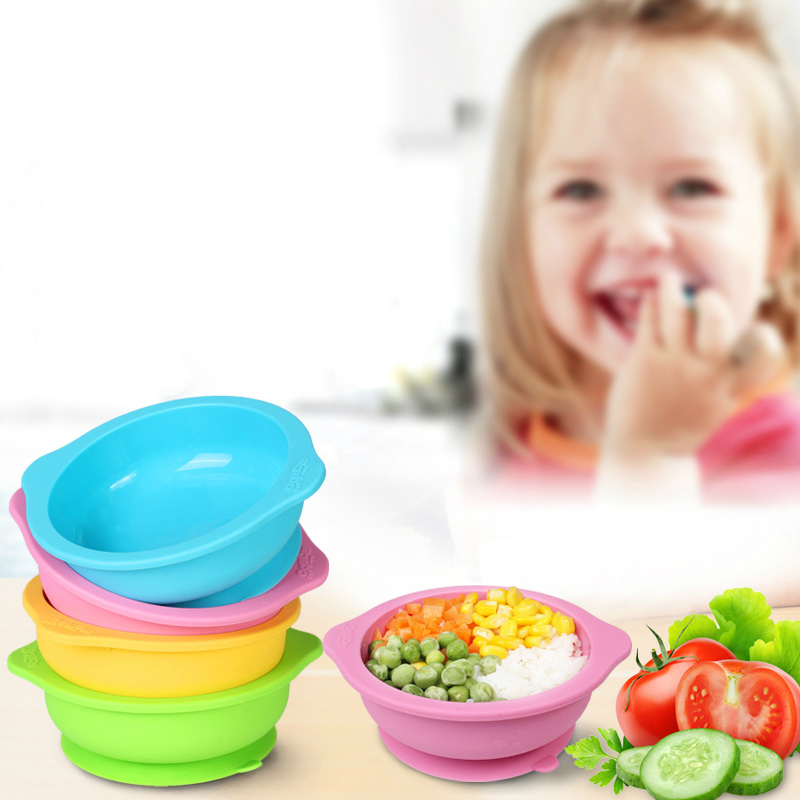 If you have a daughter, you probably remember how, with her birth, pink objects slowly but surely began to fill the house. At first it was the first blanket and ribbon on the envelope for discharge from the hospital. Then bodysuits and sliders, rattles and bottles began to appear. Later - pink dresses, hair clips, bracelets and handbags.
If you have a daughter, you probably remember how, with her birth, pink objects slowly but surely began to fill the house. At first it was the first blanket and ribbon on the envelope for discharge from the hospital. Then bodysuits and sliders, rattles and bottles began to appear. Later - pink dresses, hair clips, bracelets and handbags.
When the baby moved to a separate room, she demanded pink wallpaper, a crib and a chest of drawers. No other options, of course, were considered. A similar period happens in the life of almost every girl. In part, we impose this stereotype ourselves. After all, everyone knows that boys are blue, and girls are pink.
Someone is afraid of pink madness, but excitement is unnecessary here. Firstly, the color itself has a beneficial effect on the emotional state of children. It calms, improves mood, encourages creativity. Secondly, there are many shades of pink: from cold and restrained to bright fuchsia. Dilute pink with neutral gray for a noble combination that is great for a child's room. And finally, love for this color, as a rule, passes with age.
And finally, love for this color, as a rule, passes with age.
RED
Perhaps the most exciting color. It burns like a flame or the sun at sunset, attracts attention and arouses interest. Red is able to cheer up even the most calm children. The color of leadership and energy. This color causes activity, mobility, appetite and interest in learning.
It has to be used carefully. Small bright accents in the interior or wardrobe are acceptable and even welcome. But prolonged contemplation of red can lead to excessive excitability, sleep disturbance and aggression.
YELLOW
No less bright than red, but at the same time it has a completely different effect on the human psyche. Yellow is associated with sunlight, fluffy chicken, fragrant lemon and a warm autumn day. It soothes, warms and uplifts the mood. This color is able to defeat depression and blues. It does not have an exciting effect, but gently stimulates.
Yellow items are great for children's interiors. This shade improves brain activity, promotes learning and the development of intuition, and also gives joy. Yellow is almost perfect, but overly excitable people should be careful with it.
ORANGE
Another juicy color that gives mood. It has the freshness of orange juice, the brightness of summer flowers and sunshine. Orange is the color of energy, expression, extraversion. He is impulsive and invigorating.
The action of the orange color stimulates the child's communication skills, knowledge of the world, as well as appetite. If the baby is shy and not very active, orange can help. Add brightness to the interior or wardrobe, and the effect will not keep you waiting. In addition, orange ensures the healthy functioning of all body systems, and also strengthens psycho-emotional stability. An indispensable color for children's environment.
PURPLE
Imagination draws lilac and lavender, delicate violets and shades of sunset. Deep and even intelligent color. It is a symbol of spiritual development and enlightenment.
Deep and even intelligent color. It is a symbol of spiritual development and enlightenment.
The use of purple in the interior of the room has a beneficial effect on the psyche of the child. Gives a feeling of peace, enhances empathy and intuition. The strength of this color is in harmony. Purple is liked by both girls and boys, so feel free to make a choice in its favor.
TURQUOISE
This shade gives us the sea, a bright sky on a sunny day, jewelry with turquoise. Pleasant to the eye, refreshing, invigorating.
This color promotes creativity and self-expression, calms, but at the same time gently stimulates to action. The use of turquoise color is possible both in the wardrobe of boys and girls. Great for a child's room, uplifting and relaxing.
GRAY
At first glance, it may seem bleak and dull. We call gray a rainy day, clouds in the autumn sky or a bad mood. In fact, the effect of gray on a person is very beneficial. It instills confidence, reassures. Gray perfectly dilutes brighter colors in the interior or wardrobe.
Gray perfectly dilutes brighter colors in the interior or wardrobe.
Does your daughter like lots of pink? Add discreet gray to it and get a noble combination. This color harmoniously looks with many rich shades, calming them. Do not be afraid of gray, but it is not advisable to overdo it.
HOW TO APPLY KNOWLEDGE ABOUT COLORS
As you can see, having studied the psychology of color, you can carefully influence the psyche and mood of the child. Some shades soothe and relax, others invigorate and give strength. When choosing a color, be guided by the temperament and character of the children, and also take into account their biorhythms and condition at a particular point in time.
For example, in the morning we all lack vigor. Serve your little one breakfast on an orange plate and you'll energize them for the day ahead. But in the evening it is better to listen to fairy tales, wrapped in a soft green blanket.
For walks on a gloomy autumn day, wear boots and a raincoat in rich colors. Such clothes will cheer you up. And when choosing pajamas, give preference to calm tones.
Such clothes will cheer you up. And when choosing pajamas, give preference to calm tones.
A room of energetic fidgets is best decorated in neutral colors. Shy and less active will help to liberate bright accents in the interior.
Now you are armed with knowledge, but do not forget to rely not only on theory, but also on the preferences of the baby. After all, the main thing is that the color is pleasant and pleasing to the eye.
Breastfeeding a newborn | What to Expect in the First Week
The first week of a baby's life is a wonderful but hectic time, especially if you haven't breastfed before. Our breastfeeding tips will help you settle in as quickly as possible
Share this information
The first time after childbirth, mothers are often confused. The body is still recovering, and you are already starting to get to know your newborn baby. The emotional state during this period can be unstable, especially between the second and fifth day, when many women have milk 1 and at the same time postpartum depression begins 2 . In addition, people around often expect (and demand) that a woman come to her senses as soon as possible and become a “super mom”. But the best thing to do this first week is just to be with your baby and get breastfeeding going.
In addition, people around often expect (and demand) that a woman come to her senses as soon as possible and become a “super mom”. But the best thing to do this first week is just to be with your baby and get breastfeeding going.
When should I start breastfeeding my newborn?
Try to breastfeed your baby within the first hour after birth. When the baby latch onto the breast and begins sucking rhythmically, it stimulates the mammary gland cells and starts milk production. 1 No wonder this time is called the "magic hour"!
“Ideally, the baby should be placed on the mother's stomach immediately after birth so that it can immediately attach to the breast. He won't necessarily eat, but he should be able to,” explains Cathy Garbin, an internationally recognized expert on breastfeeding.
“Hold your baby and let him find the breast on his own and put the nipple in his mouth. This is called the breast-seeking reflex. On the Internet you can watch videos that show what this process looks like.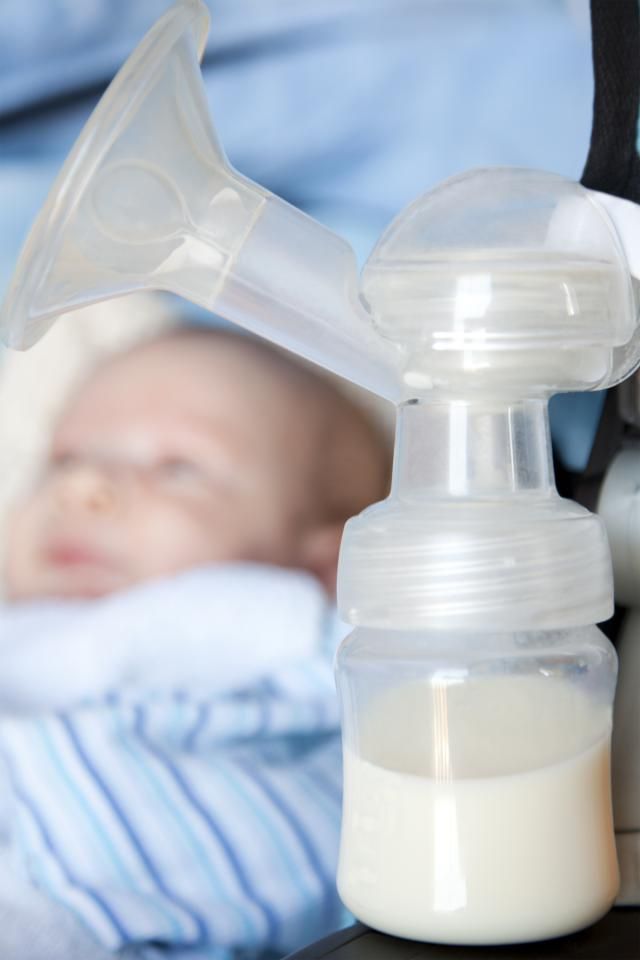 If the baby does not latch onto the nipple on its own, the midwife will help to properly attach it to the breast. But for starters, it’s good to give the baby the opportunity to do it on their own. In this case, the optimal position for the mother is reclining. ”
If the baby does not latch onto the nipple on its own, the midwife will help to properly attach it to the breast. But for starters, it’s good to give the baby the opportunity to do it on their own. In this case, the optimal position for the mother is reclining. ”
Don't spend that special first hour of your baby's life weighing and swaddling—or at least wait until he's suckling for the first time. Enjoy hugs and close skin-to-skin contact. This promotes the production of oxytocin, the hormone of love, in you and your baby, and oxytocin plays a key role in the supply of the first breast milk - colostrum. 3
“As soon as the obstetricians were convinced that our son was healthy, the three of us — me, my husband and our baby — were left to give us the opportunity to get to know each other. It was a very special hour - an hour of awkwardness, turbulent emotions and bliss. During this time, I breastfed my son twice, ”recalls Ellie, a mother of two from the UK.
Did you know that breastfeeding helps to recover after childbirth? This is because oxytocin stimulates uterine contractions.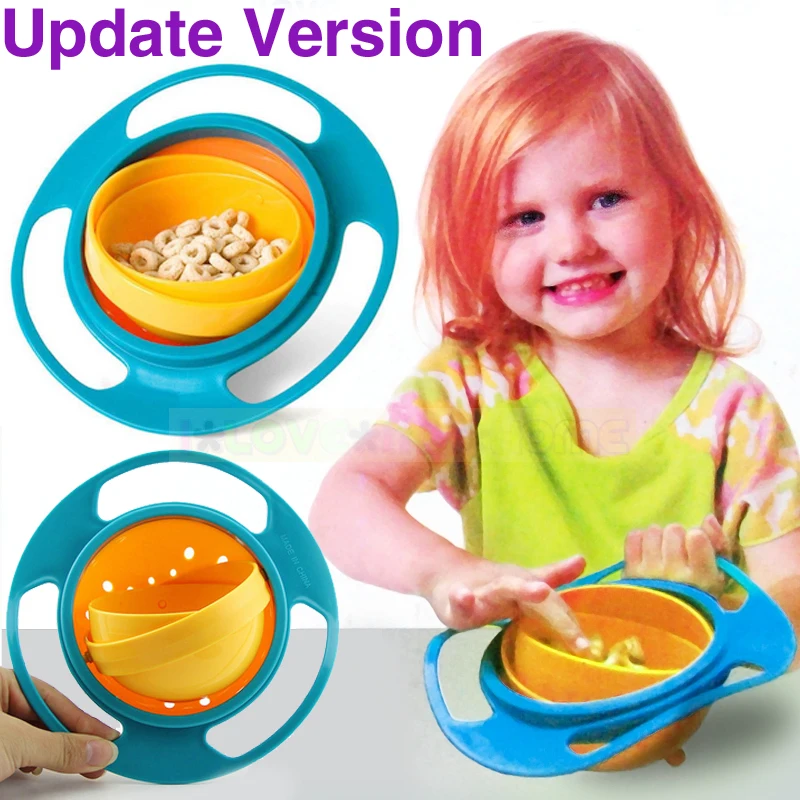 In the first hours after childbirth, this contributes to the natural release of the placenta and reduces blood loss. 4
In the first hours after childbirth, this contributes to the natural release of the placenta and reduces blood loss. 4
What to do if the birth did not go according to plan?
If you had a cesarean section or other complications during childbirth,
You can still establish skin-to-skin contact with your baby and breastfeed him in the first hours after birth.
“If you can't hold your baby, have your partner do it for you and make skin-to-skin contact with the baby. This will give the baby a sense of security, care and warmth so that he can hold on until you recover, ”Katie advises.
If the baby is unable to breastfeed, it is advisable to start expressing milk as early as possible and do so as often as possible until the baby is able to feed on its own. “While breastfeeding in the first hours after birth lays an excellent foundation for the future, it is not so important,” Cathy reassures. “It is much more important to start lactation so that in the future, if necessary, you can start breastfeeding.![]() ”
”
To start milk production, you can express milk manually or use a breast pump that can be given to you at the hospital. 5 And it will be possible to feed a child with expressed precious colostrum. This is especially important if the baby was born premature or weak, since breast milk is extremely healthy.
If a baby was born prematurely or has a medical condition and cannot be breastfed immediately, this is no reason not to continue breastfeeding. “I have worked with many new mothers who were unable to breastfeed their baby for the first six weeks due to preterm labor or other reasons. Nevertheless, all of them later successfully switched to breastfeeding,” says Kathy.
Does the baby latch on correctly?
Correct breastfeeding is essential for successful breastfeeding 6 , as it determines how effectively the baby will suckle milk, and therefore grow and develop. Latching on the breast incorrectly can cause sore or damaged nipples, so don't hesitate to ask your doctor to check that your baby is properly attached to the breast, even if you are told that everything is fine and you do not see obvious problems - especially while you are in the hospital.
“While I was in the hospital, I called the doctor at every feed and asked me to check if I was breastfeeding correctly,” says Emma, mother of two from Australia. - There were several cases when it seemed to me that everything seemed to be right, but it was painful to feed, and the doctor helped me take the baby off the breast and attach it correctly. By the time I was discharged, I had already learned to do it confidently.”
When applying to the breast, point the nipple towards the palate. This will allow the baby to take the nipple and part of the areola under it into their mouth. It will be easier for him to suck if he has both the nipple and part of the areola around in his mouth. 6
“When a baby latch on properly, it doesn't cause discomfort and it causes a pulling sensation, not pain,” Cathy explains. - The baby's mouth is wide open, the lower lip may be slightly turned outward, and the upper one lies comfortably on the chest. The body language of the child indicates that he is comfortable. There isn't much milk at this early stage, so you probably won't notice your baby swallowing, but he will suckle a lot and nurse frequently."
There isn't much milk at this early stage, so you probably won't notice your baby swallowing, but he will suckle a lot and nurse frequently."
How often should a newborn be fed?
The frequency and duration of breastfeeding in the first week can vary greatly. “The first 24 hours of life are completely different for different children. Someone sleeps a lot (after all, childbirth is tiring!), And someone often eats, says Katie. - Such a variety greatly confuses young mothers. Everyone gives different advice, so it's important to remember that every mother and child is different."
“Colostrum is thicker than mature breast milk and is produced in smaller amounts, but has many benefits. When the baby eats colostrum, he learns to suck, swallow and breathe until milk begins to flow in more volume, ”explains Cathy.
Milk usually arrives on the second or fourth day after birth. Until this time, the baby is applied to the breast 8-12 times a day (and sometimes more often!), including at night.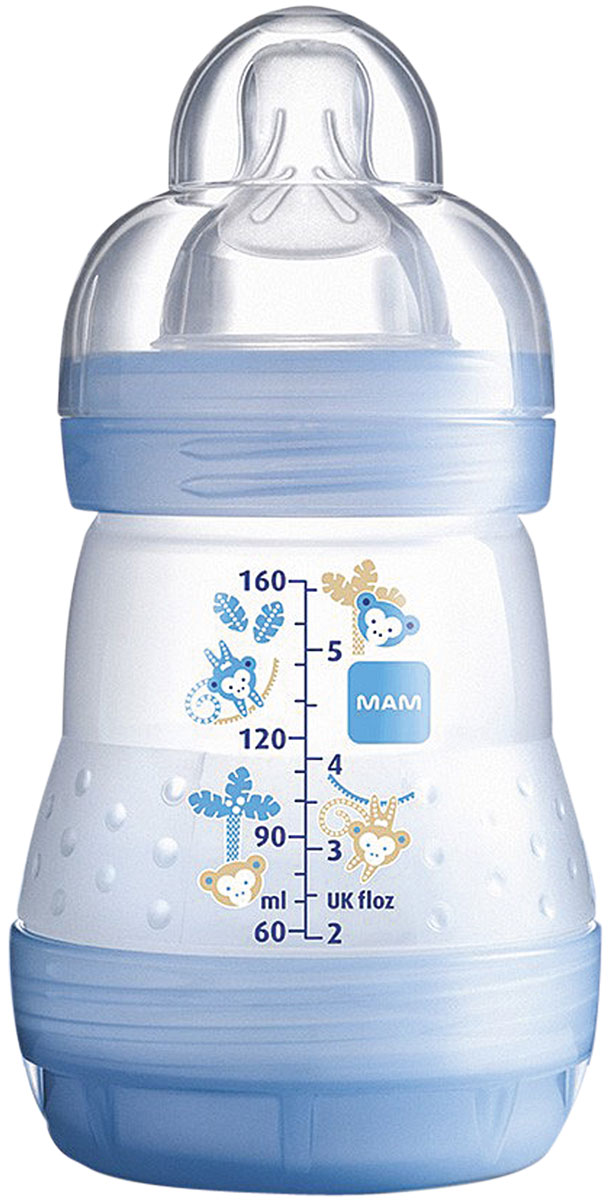 7 Feeding may last 10-15 minutes at this stage, or 45 minutes or even an hour, as the baby is just beginning to develop the muscles and coordination needed to suckle effectively.
7 Feeding may last 10-15 minutes at this stage, or 45 minutes or even an hour, as the baby is just beginning to develop the muscles and coordination needed to suckle effectively.
“At first, the intensity of feeding is very high, often higher than many people realize, and this is shocking to most new mothers,” says Cathy. - Sometimes mom has no time to go to the toilet, take a shower and have a snack. It usually comes as a surprise."
Camille, a mother from Australia, experienced this. “The first week, Frankie ate every two hours, day and night, and each time it took half an hour to an hour to feed,” she recalls. “My husband and I were completely exhausted!”
Should I feed my newborn on a schedule?
The good news is that frequent feeding promotes lactation and stimulates milk production. 7 The more your baby eats, the more milk you will have. Therefore, forget about feeding your newborn on a schedule - this way he will have less chance of feeding.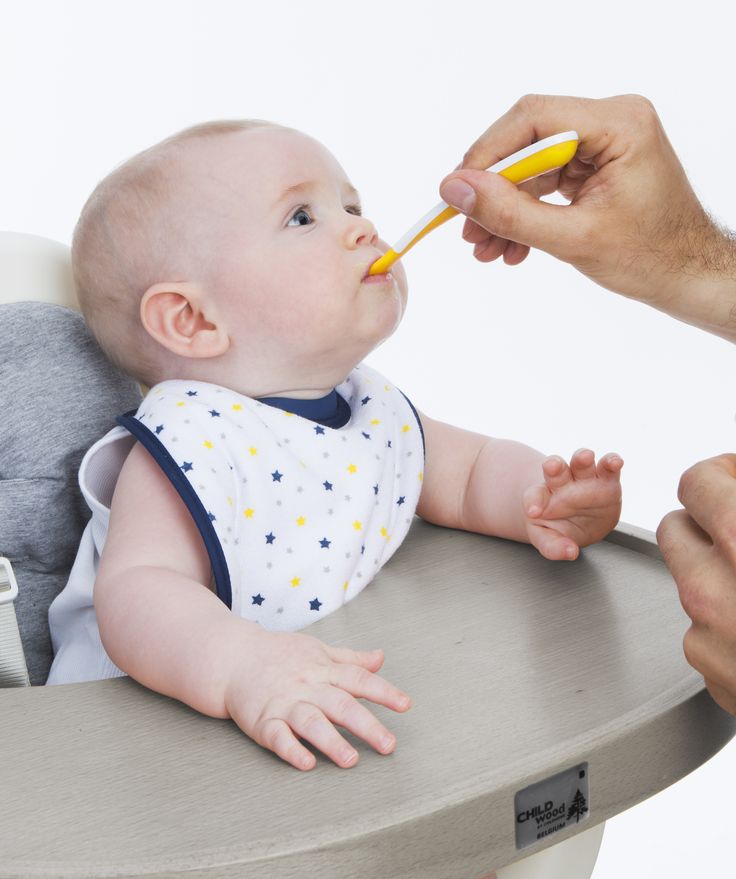 Try to feed your baby when he signals that he is hungry 8 :
Try to feed your baby when he signals that he is hungry 8 :
- tossing and turning in his sleep;
- opens eyes;
- turns his head if he feels a touch on his cheek;
- sticks out tongue;
- groans;
- licks lips;
- sucks fingers;
- is naughty;
- whimpers;
- is crying.
Crying is the last sign of hunger, so when in doubt, just offer your baby the breast. If he bursts into tears, it will be more difficult to feed him, especially at first, when both of you are just learning how to do it. As your baby grows, he will likely eat less frequently and take less time to feed, so breastfeeding will seem more predictable.
Does breastfeeding hurt?
You may have heard that breastfeeding is not painful at all, but in fact, in the first days, many new mothers experience discomfort. And this is not at all surprising, given that the nipples are not used to such frequent and strong sucking.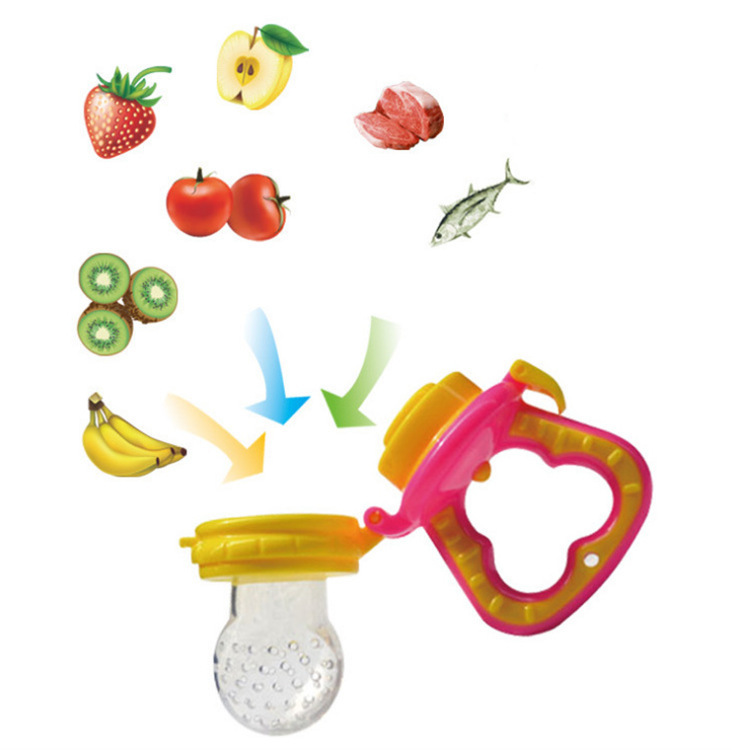
“Breastfeeding can be uncomfortable for the first couple of days – your body and your baby are just getting used to it. If a baby eats for too long and does not latch well, the sensations are almost the same as from unworn new shoes, Cathy compares. Just as tight shoes can rub your feet, improper suckling can damage your nipples. Prevention is always better than cure, so if the pain persists after a few days of feeding, contact a lactation consultant or healthcare professional.”
Maria, a mother from Canada, agrees: “Although my son seemed to latch onto the breast well, he damaged his nipples while feeding, and I was in pain. As it turned out, the reason was a shortened frenulum of the tongue. The breastfeeding specialists at our city clinic have been of great help in diagnosis and treatment.”
In addition, you may experience period cramps during the first few days after breastfeeding, especially if this is not your first baby. This is the so-called postpartum pain.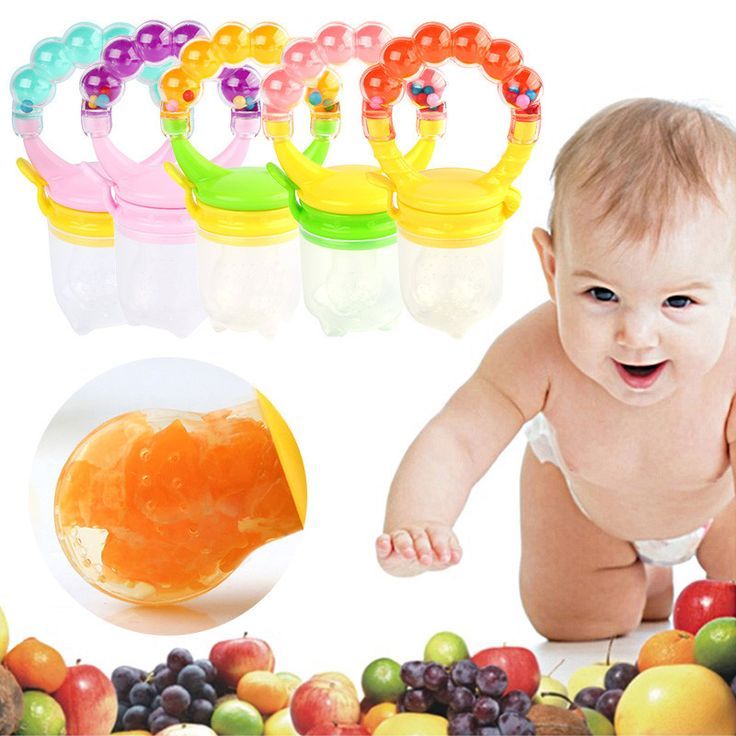 The fact is that oxytocin, which is released during breastfeeding, contributes to further contraction of the uterus to restore its normal size. 4
The fact is that oxytocin, which is released during breastfeeding, contributes to further contraction of the uterus to restore its normal size. 4
When milk arrives, the breasts usually become fuller, firmer and larger than before delivery. In some women, the breasts swell, harden and become very sensitive - swelling of the mammary glands occurs. 10 Frequent breastfeeding relieves these symptoms. For more breast care tips, read our article What is Breast Swelling?
How often does the newborn urinate and defecate?
What goes into the body must go back out. Colostrum
has a laxative effect, helping to eliminate meconium - the original feces. It looks a little scary - black and sticky, like tar. 11 But don't worry, it won't always be like this. Breastfed babies usually have a slightly sweet smell of stool.
How many times a day you will need to change diapers and how the contents should look like, see below.
Day one
- Frequency: once or more.

- Colour: greenish black.
- Texture: sticky like tar.
Second day
- Frequency: twice or more.
- Colour: dark greenish brown.
- Texture: less sticky.
Day three
- Frequency: twice or more.
- Colour: greenish brown to brownish yellow.
- Texture: non-sticky.
Fourth day and then the entire first month
- Frequency: twice or more.
- Color: yellow (feces should turn yellow no later than by the end of the fourth day).
- Texture: grainy (like mustard with grains interspersed). Leaky and watery.
The baby's urine should be light yellow. On average, babies urinate once a day for the first two days. Starting around the third day, the number of wet diapers increases to three, and from the fifth day onwards, diapers have to be changed five times a day or more often. In addition, during the first few days, the weight of wet diapers increases.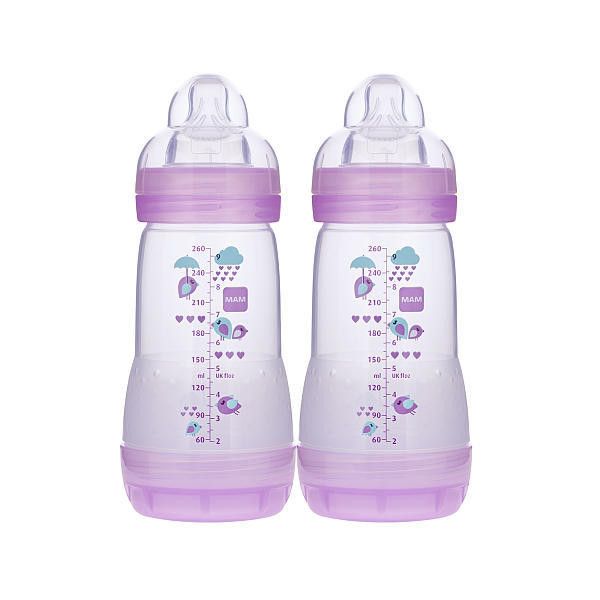 11
11
Is the baby getting enough breast milk?
Since very little milk is produced at first,
You may feel that your baby is not getting enough milk. But if you feed your baby on demand, you will produce exactly as much milk as he needs. If you want to keep the process under control, be guided by the frequency of diaper changes above. If your baby soils less diapers, check with your doctor.
“For the first three or four weeks, most babies just eat and sleep. If the child is worried and constantly asks for a breast, you should consult with your doctor, ”Katie recommends.
Sometimes the baby may vomit after feeding. If the vomit is the color of milk, this is not a cause for concern. But if there are orange, red, green, brown or black blotches in it, or the child vomits with a "fountain", consult a doctor. You should also consult a doctor if the baby has a high temperature, the fontanel (soft spot on the head) has sunk, blood is found in the stool, and also if the weight recorded at birth has not recovered within two weeks. 11
11
But if there are no frightening symptoms and the baby is growing at a normal pace, it means that he has enough milk. Soon you will both get used to breastfeeding and establish a more stable routine.
For the next step in breastfeeding, see Breastfeeding the First Month: What to Expect.
Literature
1 Pang WW, Hartmann PE. Initiation of human lactation: secretory differentiation and secretory activation. J Mammary Gland Biol Neoplasia 2007;12(4):211-221. - Pang, W.W., Hartmann, P.I., "Lactation initiation in the lactating mother: secretory differentiation and secretory activation." G Mammary Gland Biol Neoplasia. 2007;12(4):211-221.
2 Shashi R et al. Postpartum psychiatric disorders: Early diagnosis and management. Indian J Psychiatry . 2015; 57( Suppl 2): S 216– S 221. - Shashi R. et al., Postnatal mental disorders: early diagnosis and treatment. Indian J Saikiatri. 2015; 57(App 2):S216-S221.
- Shashi R. et al., Postnatal mental disorders: early diagnosis and treatment. Indian J Saikiatri. 2015; 57(App 2):S216-S221.
3 Moberg KU, Prime DK. Oxytocin effects in mothers and infants during breastfeeding. Infant . 2013;9(6):201-206. - Moberg K, Prime DK, "The effects of oxytocin on mother and child during breastfeeding." Infant. 2013;9(6):201-206.
4 Sobhy SI, Mohame NA. The effect of early initiation of breast feeding on the amount of vaginal blood loss during the fourth stage of labor. J Egypt Public Health Assoc . 2004;79(1-2):1-12. - Sobhi SI, Moham NA, "Early initiation of breastfeeding and its effect on vaginal bleeding in the fourth stage of labor." F Egypt Public Health Assoc. 2004;79(1-2):1-2.
5 Meier PP et al. Which breast pump for which mother: an evidence-based approach to individualizing breast pump technology. J Perinatol . 2016;36(7):493. - Meyer P.P. et al., Breastpump Selection: A Scientific Approach to Customizing Pumping Technology. J Perinatol (Journal of Perinatology). 2016;36(7):493-499.
J Perinatol . 2016;36(7):493. - Meyer P.P. et al., Breastpump Selection: A Scientific Approach to Customizing Pumping Technology. J Perinatol (Journal of Perinatology). 2016;36(7):493-499.
6 Cadwell K. Latching - On and Suckling of the Healthy Term Neonate: Breastfeeding Assessment. J Midwifery & Women ’ s Health . 2007;52(6):638-642. — Cadwell, K., "Latching and sucking in healthy newborns: evaluation of breastfeeding." F Midwifery Women Health. 2007;52(6):638-642.
7 Kent JC et al. Principles for maintaining or increasing breast milk production. J 2012;41(1):114-121. - Kent J.S. et al., "Principles for Maintaining and Increasing Milk Production". J Obstet Ginecol Neoneutal Nurs. 2012;41(1):114-121.
8 Australian Breastfeeding Association [ Internet ].


